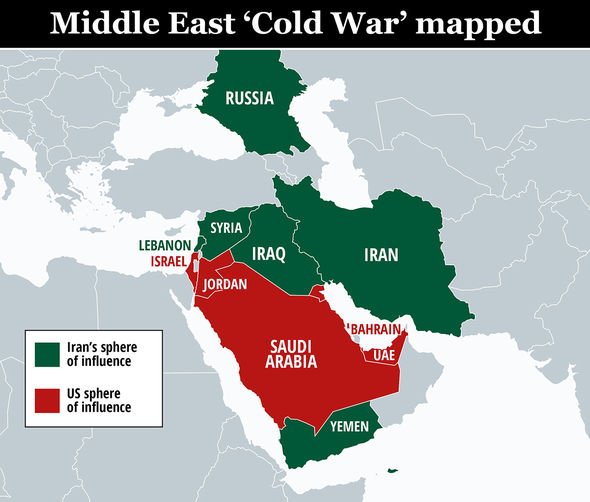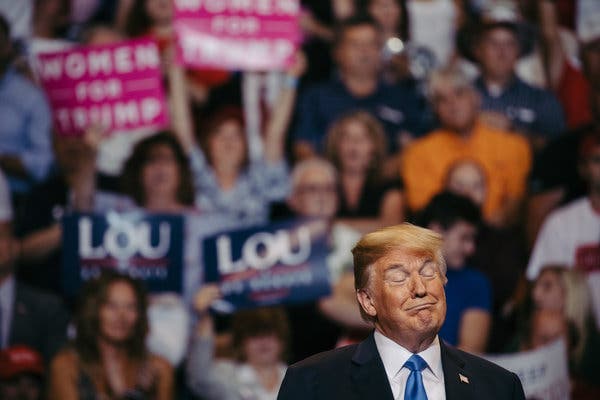Trump's Middle East Policy: Shifting Alliances And Regional Tensions

Table of Contents
The Abraham Accords: Normalization with Israel
One of the most significant achievements of Trump's Middle East policy was the brokering of the Abraham Accords. These normalization agreements between Israel and several Arab nations represent a landmark shift in regional dynamics. The Accords, a cornerstone of Trump's Middle East peace plan, marked a departure from decades of entrenched conflict and animosity.
- Participating Countries and Dates: The UAE (August 2020), Bahrain (September 2020), Sudan (October 2020), and Morocco (December 2020) all signed normalization agreements with Israel under the Abraham Accords.
- Motivations: The motivations for participation varied. For the UAE and Bahrain, concerns about Iran's growing regional influence played a significant role. Sudan sought to improve its international standing and gain access to economic benefits. Morocco likely saw the Accords as a way to enhance its relationship with the US and secure support on the Western Sahara issue.
- Long-Term Impact: The long-term impact of the Abraham Accords remains to be seen. However, they have fostered increased economic cooperation and cultural exchange between Israel and the participating Arab nations. They also potentially represent a significant step towards a more peaceful and integrated Middle East, although skepticism remains.
- Criticisms and Challenges: Critics argue that the Accords fail to address the underlying Palestinian issue, thus neglecting a key element of lasting regional peace. Concerns remain about the potential for further instability if the Palestinian issue is not resolved.
Withdrawal from the Iran Nuclear Deal and Renewed Tensions
Trump's decision to withdraw the United States from the Joint Comprehensive Plan of Action (JCPOA), the Iran nuclear deal, in 2018 significantly escalated tensions in the Middle East. This move, a central element of Trump's Iran policy, reversed years of international diplomacy aimed at curbing Iran's nuclear ambitions.
- JCPOA and Trump's Opposition: The JCPOA, signed in 2015, limited Iran's uranium enrichment program in exchange for the lifting of international sanctions. Trump argued that the deal was flawed, failing to address Iran's ballistic missile program and regional destabilizing activities.
- Impact of Sanctions: The re-imposition of sanctions severely impacted Iran's economy, leading to widespread hardship and fueling resentment towards the US. This economic pressure, however, did not significantly curb Iran's regional actions.
- Increased Gulf Tensions: The withdrawal from the JCPOA led to a significant increase in tensions in the Gulf region. The risk of military conflict between Iran and the US, or its allies, rose considerably.
- Nuclear Proliferation Implications: Trump's decision raised concerns about the future of nuclear non-proliferation efforts. The withdrawal undermined international agreements and set a precedent that could encourage other states to disregard similar agreements.
Increased Pressure on Iran: Military Actions and Proxy Conflicts
Trump's administration pursued a policy of maximum pressure against Iran, employing targeted military strikes and supporting regional opponents. This strategy aimed to curb Iranian influence and counter its support for proxy groups.
- Military Actions: Examples include the targeted killing of Iranian General Qassem Soleimani in 2020. This action, while aiming to deter further Iranian aggression, heightened regional tensions and risked escalating into a wider conflict.
- Impact on Regional Balance of Power: These military actions significantly impacted the regional balance of power, further exacerbating existing tensions. They created an environment of uncertainty and increased the risk of miscalculation.
- Effectiveness: The effectiveness of this approach in curbing Iranian influence remains debatable. While it may have temporarily deterred certain actions, it also strengthened Iran’s narrative of being under attack and increased its regional proxy activities.
Approach to the Israeli-Palestinian Conflict
Trump's approach to the Israeli-Palestinian conflict marked a significant departure from previous administrations. His "Deal of the Century," presented in 2020, favored the Israeli position on numerous key issues.
- Trump Peace Plan ("Deal of the Century"): This plan proposed a two-state solution but deviated significantly from the traditional parameters. It offered concessions to Israel on borders and settlements, while making limited offers to the Palestinians.
- Reactions: The plan was overwhelmingly rejected by the Palestinian Authority, who viewed it as heavily biased towards Israel. Israel, while welcoming certain aspects, remained cautious about its implementation.
- Feasibility and Impact: The plan's feasibility was widely questioned due to its lack of Palestinian support. It significantly diminished hope for a renewed peace process.
- Jerusalem and Settlements: The plan's failure to address the crucial issues of Jerusalem and Israeli settlements in the West Bank further hindered its potential for success.
Shifting Relationships with Key Regional Actors
Trump's Middle East policy led to significant shifts in US relationships with key regional players. These changes reshaped the dynamics of power and influence across the region.
- Saudi Arabia: While maintaining strong ties, Trump's relationship with Saudi Arabia was marked by a more transactional approach than previous administrations. The focus was primarily on security cooperation and arms sales.
- Other Key Players: Relationships with other actors such as Turkey, Qatar, and Egypt also experienced fluctuations. In some cases, cooperation increased while in others, tensions grew depending on strategic interests.
- Regional Dynamics: These shifts in bilateral relations significantly altered regional power dynamics, leading to increased competition and uncertainty. Alliances previously taken for granted were challenged or reshaped.
Conclusion
Donald Trump's Middle East policy was characterized by a departure from traditional approaches, leading to both significant achievements like the Abraham Accords and heightened regional tensions, particularly with Iran. His decisions regarding the Iran nuclear deal and his approach to the Israeli-Palestinian conflict remain highly debated and have left a lasting impact on the region. The legacy of his Middle East policy is one of both unprecedented diplomatic breakthroughs and increased regional instability, leaving a complex and challenging situation for future administrations to navigate. Understanding Trump's Middle East policy and its consequences is crucial for comprehending the current complexities of the region. To delve deeper into this critical topic and learn more about the long-term implications of these shifts in alliances and regional tensions, further research into specific aspects of Trump's Middle East policy is recommended.

Featured Posts
-
 Trump Condemns Springsteens Treasonous Remarks
May 18, 2025
Trump Condemns Springsteens Treasonous Remarks
May 18, 2025 -
 Classmate Details Past Behavior Of Amanda Bynes
May 18, 2025
Classmate Details Past Behavior Of Amanda Bynes
May 18, 2025 -
 Snl Audience Outburst Ego Nwodim And Weekend Update Hosts Stunned
May 18, 2025
Snl Audience Outburst Ego Nwodim And Weekend Update Hosts Stunned
May 18, 2025 -
 Detroit Tigers Star Riley Greene Creates Mlb History
May 18, 2025
Detroit Tigers Star Riley Greene Creates Mlb History
May 18, 2025 -
 Taylor Swifts Eras Tour Wardrobe A Close Up Look At Her Stunning Outfits
May 18, 2025
Taylor Swifts Eras Tour Wardrobe A Close Up Look At Her Stunning Outfits
May 18, 2025
Latest Posts
-
 Watch Snl Cold Open Featuring Hegseth Vance And Rubio In A Teen Group Chat
May 18, 2025
Watch Snl Cold Open Featuring Hegseth Vance And Rubio In A Teen Group Chat
May 18, 2025 -
 Highlights From Snls Jack Black Episode Ego Nwodims Improv And More
May 18, 2025
Highlights From Snls Jack Black Episode Ego Nwodims Improv And More
May 18, 2025 -
 Understanding The Clasp Michelle Williams And The Dying For Sex Controversy
May 18, 2025
Understanding The Clasp Michelle Williams And The Dying For Sex Controversy
May 18, 2025 -
 Ego Nwodim And The Best Bits From Snls Live Jack Black Episode
May 18, 2025
Ego Nwodim And The Best Bits From Snls Live Jack Black Episode
May 18, 2025 -
 Snls Latest Cold Open Republican Senators Crash A Teen Group Chat
May 18, 2025
Snls Latest Cold Open Republican Senators Crash A Teen Group Chat
May 18, 2025
